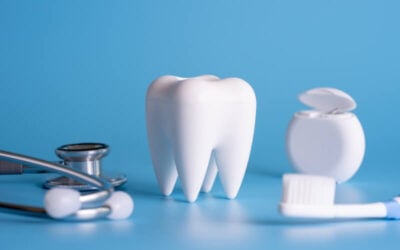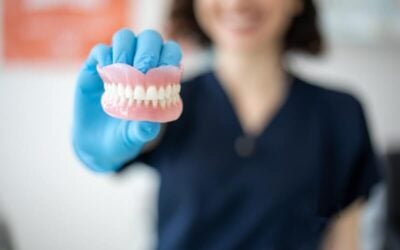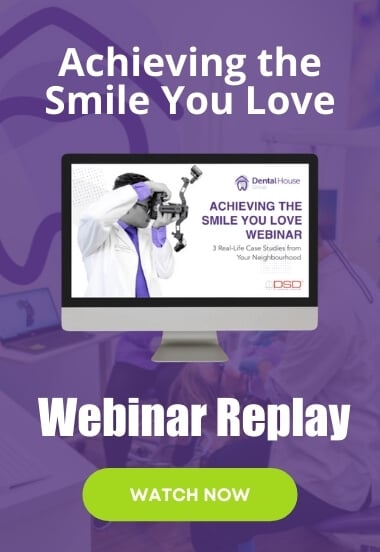Dental Technology Can Save Coral Reefs
Dental Technology Can Save Coral Reefs

We are indeed adherents and addicts of the quick-fix-not-my-fault moral barcode of the day if we truly believe that advanced technology will do for us what we’ve indecisively ignored, rejected, delayed and refused to urgently act upon for more than fifty years.
For vacuous hope, a golf clap. For mankind deferring responsibility until there is absolute certainty in the commonest response to the current environmental crisis, a mighty “Tally-ho!” into a most-unpleasant and doomed future.
Humans have been very good at causing species’ extinction. It all began with the movement of hominids about 125,000 years ago – lasting populations were spreading out of Africa and southeast Asia. The migration over the next tens-of-thousands of years to Eurasia, Oceania, and to North and South America, have fossil records showing a corresponding surge in megafauna extinctions across each of those continents as the destructo-tour continued.
Each time our ancestors set foot in a new place, rather than stamping a carbonised print on the planet, it’s evident to paleontologists that the prehistoric ancestors of elephants, bears, antelope and other large species became extinct within two-to-eight-hundred years of humans turning up – obviously empty handed.
It’s a rapidity of timescale that doesn’t occur at any other point in the last tens of millions of years; not since the take-no-prisoners asteroid of 65 million of them ago.
The only time it’s seen is when human populations were, and are, present.
So we’ve been permanently wrecking stuff for a very long time. This time, however, marks the first of globally eliminating an entire ecosystem.
It’s not like wiping out a McFamily Bundle and two cheesecakes on your own. It’s actually obliterating an entire ecosystem that started 500 billion years ago.
One that is biotically productive and rich. And very, very valuable. Irreplaceable, in terms of the health of our planet.
We can deny we rely on that – doesn’t change that we do.
This horror decimation of our coral reefs is a screaming warning of more broken bits of biosphere heading our way because we will not change the way we see our world.
We see it as exploitable. We see it as a slave to our entitlement. Not only a submissive one, but a self-tending, independently and endlessly regenerative one.
Forever and ever, Amen.
Because of their remarkable sensitivity to pollution, marine life imbalances and commercial overfishing of shallow coral reef inhabitants like lobster and snapper, there has always been reef damage. Globally, by the mid-1960s numerous reefs had been seriously degraded; but there were also many larger reefs that had been spared human impact.
There are few near-pristine reefs left. Because there are few, and us being Homo sapiens, we will chuck it on the Bucket List, TikTok it, and flock those sacred places because the effect of CO2 emissions is not enough.
We already know, globally, that coral reefs as they were known in the 1970s will have completely disappeared by 2050.
Completely.
Most coral reef scientists advocate that a limit of atmospheric CO2 to 350 ppm would Back to the Future us to the mid-1980s in which coral reefs could thrive, but not proliferate.
The issue for reefs of course is the warming that creates the mass bleaching. The mortality of corals, and the resulting ocean acidification, leads to slower growth – and that’s substantial.
Australian corals grow 14% slower than they did during the 1980s because forming their calcium carbonate skeletons is now energetically far more demanding because of the threatening and deficit environment they’re now in.
What we’re achieving is the art of killing off the critical species in an ecosystem at a much faster rate than ever before, while simultaneously under supporting the survivors.
This is how to eliminate an ecosystem from the planet without really trying.
Coral reefs contain a quarter of all marine species, despite consisting of only 0.1% of the area of the world’s oceans.
Relative to the world population, that’d be 7.9 million people: about one-and-a-half times the populace of Sydney.
And 60,000 ocean-dwelling species.
There are a few exploratory treatments for the preservation of coral reefs. Making “coral nurseries” is one – designating protected areas for coral to grow, then transplanting them into bleached areas.
It’s a short-term solution. Marine biologists are aware that the degrading conditions are a huge contributor to coral decline, so until climate change, pollution and general abuse of the ocean are themselves in rapid decline, it’s all non-waterproof band-aiding in a bid to give coral reefs more time.
More time for what? To take longer to die?
The commercial stakes in restoring coral reefs are extreme. Across the world reefs annually support $US30 billion in goods and services to world economies, including tourism, fisheries, and coastal protection from the treacheries of coastline-smashing waves and heavy storms.
The current global environmental crisis is the most brutal that humanity has faced since the Ice Age. It includes crucial, global, mega-exploitation of fisheries, forestries, water and renewable resources. It is about substantial land, air and water contamination. It has extensive rearrangements of natural ecosystems because of our unsated insatiability. Its aburst with major climate impacts, and ocean chemistry aberrations because of greenhouse gas emissions principally from the burning of fossil fuels but from loads of other stuff as well.
And even if that isn’t the right story, we absolutely know what the ending is.
We already know it’s an important story because of the beginning of it that we’ve already named: the Anthropocene Epoch.
It’s the buzzword for a battered and bloodied environment as the resultant accumulation of Homo sapiens’ relentlessly negative impact on the planet. Atmospheric chemist and Nobel laureate Paul Crutzen popularised it in 2000, and now it has velocity in elite science circles by appearing in almost 200 peer-reviewed articles, and as the title of the new academic journal ‘Anthropocene’.
In 2016 the International Union of Geological Sciences convened a group of scholars who officially declared the Holocene over, after almost 12,000 years and an Ice Age. The Anthropocene has been declared activated in 1950 with the Great Acceleration – the dramatic increase in human activity that has effectively permanently altered the Earth and its systems.
Stratigraphers are critical of this whole idea because clear-cut evidence of a new epoch simply isn’t there. From their perspective they’re not between a rock and hard place: when geologic-time terms are named, the boundary must be exacting, and clearly visible in the rock strata.
It has many suggesting that Anthropocene is more pop culture than hard science.
The crucial question is when, specifically, human beings began leaving an indelible mark on the planet.
For instance, deep down in the rock strata, European agriculture has its signature back to the 9th century while the atomic era has scribbled radiation into every soil on the planet. For some geoscientists the Anthropocene is some sexy jargon, but there are no rock hard facts to fit the code.
Clearly there are Anthropocene conceders who don’t get bogged down in the bog. They just stipulate a date and move on.
Kind of.
Will Steffen, who heads the Australian National University’s Climate Change Institute and has also co-written articles with Paul Crutzen, maintains that the epoch began with the industrial revolution in the early 1800s.
Or with the atomic age in the 1950s.
Whatever its date or Chinese astrology, whether borne of biological or surrogate birth, the Anthropocene epoch is the mawkish mark of the sixth mass extinction since the world began.
It is expected that by 2100, half of all extant species will have become extinct.
2100. The eleventh hour.
The eleventh hour of how to eliminate 4.35 million species from the planet without really trying.
Or crying.
How utterly un-devastated we are at the devastation of our own universe. We see it, we hear it, we breathe it, we drink it and we swipe left.
We see the anger and the fear in 10-year-old kids so we let them download a new app and drink bubble tea.
That there is still the possibility of a non-disastrous outcome for the planet and its biodiversity – and therefore humanity – if we act soon is a ‘Final Sale’ cry we didn’t believe sixty years ago, and we’re not about to be convinced of it now. Now, we are generations of eternal adolescents. We are indolent and insolent. Our moral compass is North Kardashian West. We are hapless and hopeless and so avoidant of any kind of discomfort that most of us don’t even make it to the dentist when we should.
Even for a simple check-up.
That’s how shortsighted we have become. That’s how undisciplined we are.
Because we figure there’s always going to be technology to save us. Old people think it. Young people don’t know any other way.

It must be said that in both circumstances, the technology was unnecessary until the basic care and maintenance was completely disregarded.
You don’t get gum disease by properly brushing your teeth twice a day, managing some kind of inbetween-teeth cleaning, and seeing your dentist every six months.
Just like coral reefs don’t bleach themselves.
If you’re at all comfortable thanking James Cook for anything, thank him for his namesake university.
It’s where Dr Kate Quigley, of the Australian Institute of Marine Science developed a non-destructive method for rapidly and safely scanning coral – a previously laborious and protracted procedure.
Inspired by her visit to the dentist, Dr Quigley was familiar with the similarities between teeth and coral: both are calcium-based, living forms, and both require precision measurements.
That day at the dentist when the new scanning machine appeared, she immediately saw its application for scanning tiny corals – notoriously difficult to accurately measure three-dimensionally.
Reconstructing coral 3D models gives insight into their health and their pressure responses to rising temperatures and acidification. Several methods exist in the construction and assessment of these 3D demonstrations, but the effectiveness reduces when constructing such small-scale measurements, and one scan takes half a day to produce.
This new method means that for the first time, scientists can measure thousands of tiny corals rapidly, exactingly, and without negative impact on the coral. It has the potential to expand large-scale monitoring of ocean health, and for up-scaling coral reef restoration.
To think that dental equipment wouldn’t be scaling something…
On average, the dental scanner takes less than three minutes to scan and build a model of each individual coral – compared to previously more than four hours.
It also apparently removes the need to sacrifice live animals in order to take the measurements.
Yeah. There’s the rub.
Just when you thought it had all the answers.
The coral can’t be measured in situ – this dental technology can only measure out of the water.
The scanner technology relies on confocal laser technology. It doesn’t operate underwater and obviously a Ziploc bag won’t do. The Quigley hope is that the next avenue is to create an automatic analysis pipeline from scanning to measurement, potentially using AI.
Apparently, “we’re getting there!”
We certainly got ourselves here.
And here feels a bit too far from close to getting to get there. Wherever that actually is, it’s precisely nowhere we imagined.
Realistically, it’s too late to save the coral reefs we’ve reefed.
We’ve ravaged and savaged them. And now we want the very ticklish Dr Elephant to use his dental tools on Mr Dinosaur and deem everything alright.
It’s sink-or-swim at the moment, with those coral-saving dental tools. Don’t let them lay idle; and don’t let them junk up our oceans. Use them for the one structure and diverse habitat you do have influence over – your mouth. And those of your family.
If that needs a fairy tale ending, just believe that for every healthy tooth a tiny coral is born.
Then get up and really do something useful and dedicated to save our tortured reefs.
Call it reefer madness if it takes us back to the 1930s.
Back to when the surface water temperature for the 348,000 square kilometres and 2,500 individual reefs of Great Barrier Reef was a stable 35°C. The crown-of-thorns was quite a few decades from its first outbreak, and cutting-edge dental technology consisted of the nylon toothbrush, the use of fluoride, and the first biocompatible implant screw.
We’ve certainly come a long way. Mostly in the wrong direction.
Note: All content and media on the Bacchus Marsh Dental House website and social media channels are created and published online for informational purposes only. It is not intended to be a substitute for professional medical advice and should not be relied on as health or personal advice.
Services we mentioned:
Related Articles
The ADA Pushes For Better Oral Care
Dr Stephen Liew, the Australian Dental Association (ADA) president is coming out firing in the push for better oral care for Australians…
In 2024: What Your Dentist Would Really Like You To Do Differently
Happy New Year Everyone! May you make 2024 your happiest dental year ever. Here’s what your dentist would like you to do differently…
Foods And Supplements That Help Slow or Prevent Gum Disease
Are there really foods and supplements that help slow or prevent gum disease? Dentists will point toward those foods to be avoided…
Scrape The Vape Dreamscape, Increased Cavities Is The Unclouded Gravity
Misinformation, conflicting information, outdated information and largely unverifiable information abounds in the realm of vaping. So much so, it makes you wonder what the deal is in navigating an effective way to a futile addiction. You don’t have to have a medical...















